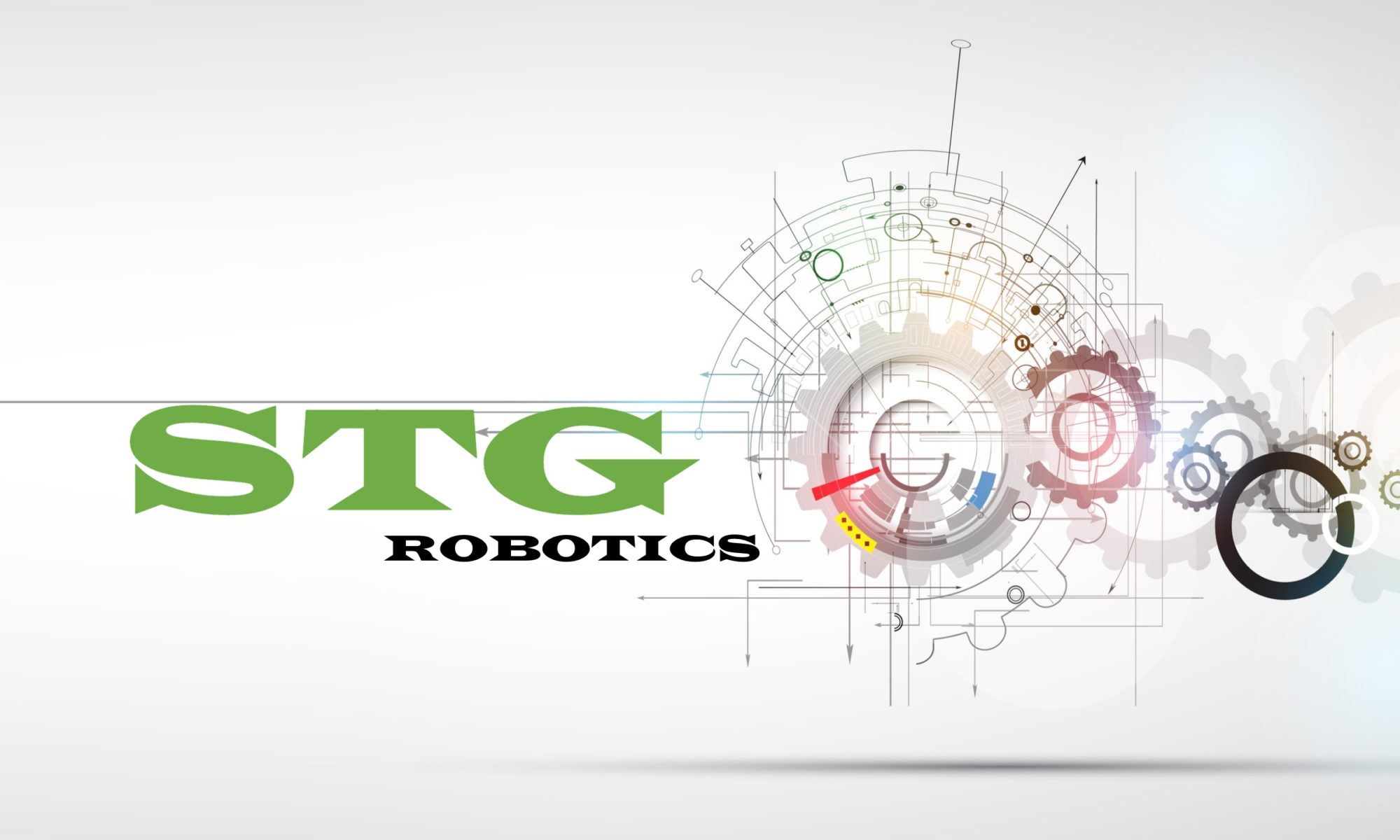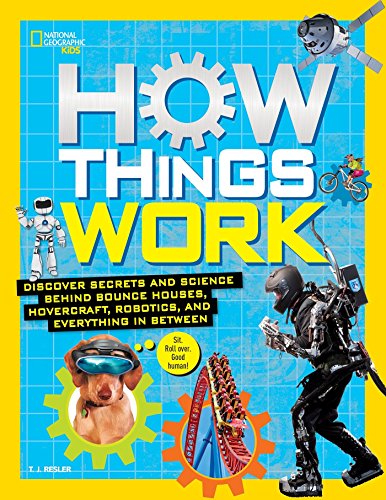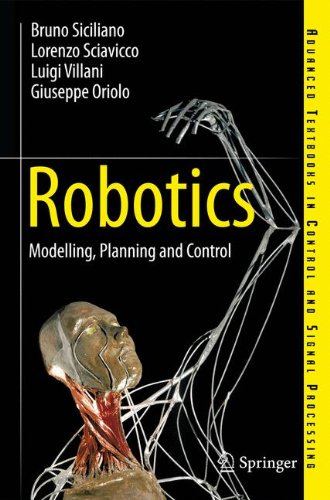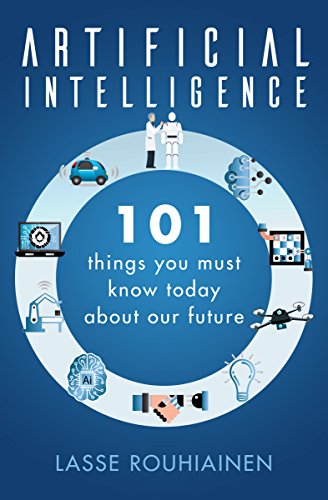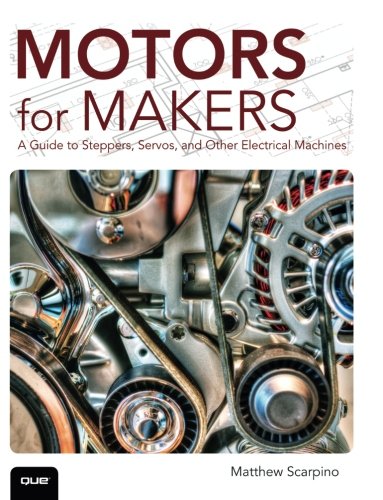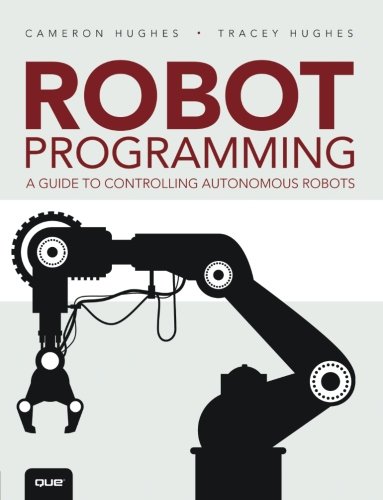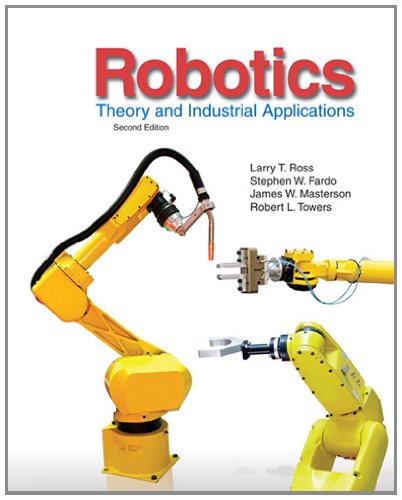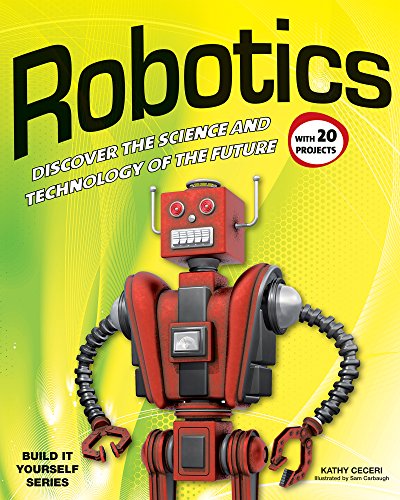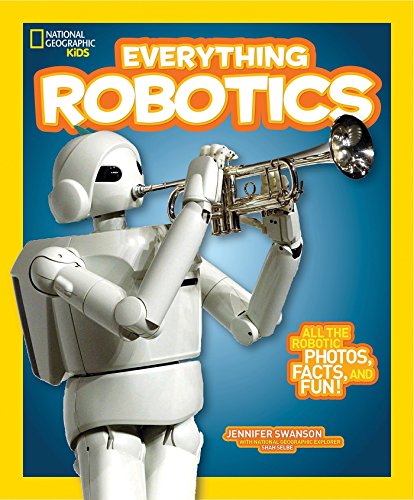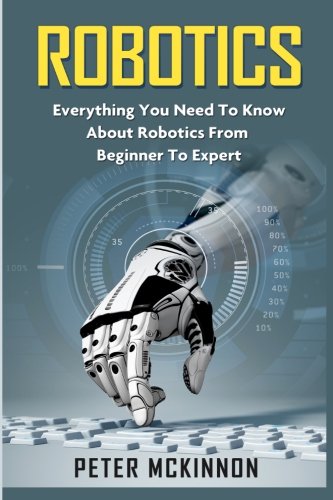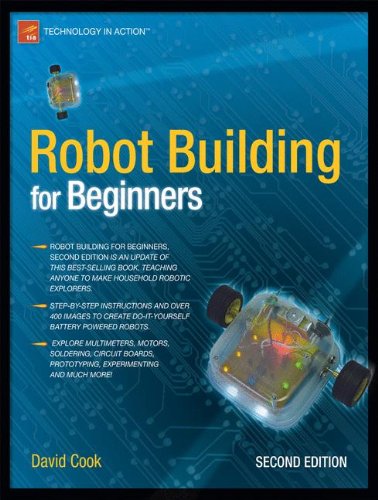Ever wanted to take apart the microwave to see how it works? Crack open your computer and peek inside? Intrigued by how things work? So are we! That’s why we’re dissecting all kinds of things from rubber erasers to tractor beams! Read along as National Geographic Kids unplugs, unravels, and reveals how things do what they do. Complete with “Tales from the Lab,” true stories, biographies of real scientists and engineers, exciting diagrams and illustrations, accessible explanations, trivia, and fun features, this cool book explains it all!
Robotics: Modelling, Planning and Control (Advanced Textbooks in Control and Signal Processing)
The classic text on robot manipulators now covers visual control, motion planning and mobile robots too!
Based on the successful Modelling and Control of Robot Manipulators by Sciavicco and Siciliano (Springer, 2000), Robotics provides the basic know-how on the foundations of robotics: modelling, planning and control. It has been expanded to include coverage of mobile robots, visual control and motion planning. A variety of problems is raised throughout, and the proper tools to find engineering-oriented solutions are introduced and explained.
The text includes coverage of fundamental topics like kinematics, and trajectory planning and related technological aspects including actuators and sensors.
To impart practical skill, examples and case studies are carefully worked out and interwoven through the text, with frequent resort to simulation. In addition, end-of-chapter exercises are proposed, and the book is accompanied by an electronic solutions manual containing the MATLAB® code for computer problems; this is available free of charge to those adopting this volume as a textbook for courses.
Artificial Intelligence: 101 Things You Must Know Today About Our Future
Did you know that artificial intelligence is changing our world faster than we can imagine?
And this is happening whether we like it or not.
Artificial intelligence will help us do almost everything better, faster and cheaper, and it will profoundly change industries such as transportation, tourism, healthcare, education, retail, agriculture, finance, sales and marketing. In fact, AI will dramatically change our entire society.
You might have heard that many jobs will be replaced by automation and robots, but did you also know that at the same time a huge number of new jobs will be created by AI?
This book covers many fascinating and timely topics related to artificial intelligence, including: self-driving cars, robots, chatbots, and how AI will impact the job market, business processes, and entire industries, just to name a few.
This book is divided into ten chapters:
- Chapter I: Introduction to Artificial Intelligence
- Chapter II: How Artificial Intelligence Is Changing Many Industries
- Chapter III: How Artificial Intelligence Is Changing Business Processes
- Chapter IV: Chatbots and How They Will Change Communication
- Chapter V: How Artificial Intelligence Is Changing the Job Market
- Chapter VI: Self-Driving Cars and How They Will Change Traffic as We Know It
- Chapter VII: Robots and How They Will Change Our Lives
- Chapter VIII: Artificial Intelligence Activities of Big Technology Companies
- Chapter IX: Frequently Asked Questions About Artificial Intelligence Part I
- Chapter X: Frequently Asked Questions About Artificial Intelligence Part II
To enhance your learning experience and help make the concepts easier to understand, there are more than 85 visual presentations included throughout the book.
You will learn the answers to 101 questions about artificial intelligence, and also have access to a large number of resources, ideas and tips that will help you to understand how artificial intelligence will change our lives.
Who is this book for?
- Managers and business professionals
- Marketers and influencers
- Entrepreneurs and startups
- Consultants and coaches
- Educators and teachers
- Students and life-long learners
- And everyone else who is interested in our future.
Are you ready to discover how artificial intelligence will impact your life?
This guidebook offers a multitude of tools, techniques and strategies that every business and individual can quickly apply and benefit from.
Motors for Makers: A Guide to Steppers, Servos, and Other Electrical Machines
The First Maker-Friendly Guide to Electric Motors!
Makers can do amazing things with motors. Yes, they’re more complicated than some other circuit elements, but with this book, you can completely master them. Once you do, incredible new projects become possible.
Unlike other books, Motors for Makers is 100% focused on what you can do. Not theory. Making.
First, Matthew Scarpino explains how electric motors work and what you need to know about each major type: stepper, servo, induction, and linear motors. Next, he presents detailed instructions and working code for interfacing with and controlling servomotors with Arduino Mega, Raspberry Pi, and BeagleBone Black. All source code and design files are available for you to download from motorsformakers.com.
From start to finish, you’ll learn through practical examples, crystal-clear explanations, and photos. If you’ve ever dreamed of what you could do with electric motors, stop dreaming…and start making!
- Understand why electric motors are so versatile and how they work
- Choose the right motor for any project
- Build the circuits needed to control each type of motor
- Program motor control with Arduino Mega, Raspberry Pi, or BeagleBone Black
- Use gearmotors to get the right amount of torque
- Use linear motors to improve speed and precision
- Design a fully functional electronic speed control (ESC) circuit
- Design your own quadcopter
- Discover how electric motors work in modern electric vehicles–with a fascinating inside look at Tesla’s patents for motor design and control!
Robot Programming: A Guide to Controlling Autonomous Robots
Start programming robots NOW!
Learn hands-on, through easy examples, visuals, and code
This is a unique introduction to programming robots to execute tasks autonomously. Drawing on years of experience in artificial intelligence and robot programming, Cameron and Tracey Hughes introduce the reader to basic concepts of programming robots to execute tasks without the use of remote controls.
Robot Programming: A Guide to Controlling Autonomous Robots takes the reader on an adventure through the eyes of Midamba, a lad who has been stranded on a desert island and must find a way to program robots to help him escape. In this guide, you are presented with practical approaches and techniques to program robot sensors, motors, and translate your ideas into tasks a robot can execute autonomously. These techniques can be used on today’s leading robot microcontrollers (ARM9 and ARM7) and robot platforms (including the wildly popular low-cost Arduino platforms, LEGO® Mindstorms EV3, NXT, and Wowee RS Media Robot) for your hardware/Maker/DIY projects. Along the way the reader will learn how to:
-
Program robot sensors and motors
-
Program a robot arm to perform a task
-
Describe the robot’s tasks and environments in a way that a robot can process using robot S.T.O.R.I.E.S.
-
Develop a R.S.V.P. (Robot Scenario Visual Planning) used for designing the robot’s tasks in an environment
-
Program a robot to deal with the “unexpected” using robot S.P.A.C.E.S.
-
Program robots safely using S.A.R.A.A. (Safe Autonomous Robot Application Architecture) Approach
-
Program robots using Arduino C/C++ and Java languages
-
Use robot programming techniques with LEGO® Mindstorms EV3, Arduino, and other ARM7 and ARM9-based robots.
Robotics: Theory and Industrial Applications
Robotics: DISCOVER THE SCIENCE AND TECHNOLOGY OF THE FUTURE with 20 PROJECTS (Build It Yourself)
Named to the 2012 Chicago Public Library’s “Best of the Best” Reading List for Informational Books for Older Readers, Robotics: Discover the Science and Technology of the Future is a fun and educational introduction to the exciting field of designing, building, and operating robots. Along with background material and clear explanations of how robots work, Robotics features step-by-step instructions for building real robot models using ordinary craft materials and parts salvaged from recycled toys and other household devices.
Budding roboticists will learn how to create working robot hands, hydraulic arms, sensors, solar-powered robots, light-seeking robots and more. A great way to get kids interested in STEM subjects (science, technology, engineering, and math), the activities encourage kids to use all their talents to come up with creative solutions to tricky problems and figure out how things work.
National Geographic Kids Everything Robotics: All the Photos, Facts, and Fun to Make You Race for Robots
They fix spacecraft, dance, tell jokes, and even clean your carpet! From the tiniest robo-bees to gigantic factory machines, robotics is all around you. This technology isn’t just for science-fiction anymore — it’s real and more relevant than ever. With stunning visuals and energetic, impactful design, readers won’t stop until they’ve learned everything there is to know about robotics.
Robotics: Everything You Need to Know About Robotics from Beginner to Expert
Explore the Fascinating World of Robotics! Do you love robots? Are you fascinated with modern advances in technology? Do you want to know how robots work? If so, you’ll be delighted with Robotics: Everything You Need to Know About Robotics from Beginner to Expert. You’ll learn the history of robotics, learn the 3 Rules, and meet the very first robots. This book also describes the many essential hardware components of today’s robots: – Analog and Digital brains – DC, Servo, and Stepper Motors – Bump Sensors and Light Sensors – and even Robotic Bodywork Would you like to build and program your own robot? You can use Robotics: Everything You Need to Know About Robotics from Beginner to Expert to learn the software basics of RoboCORE and how to create “brains” for creations like the Obstacle Avoiding Robot. You’ll also learn which materials to use to build your robot body and which sensors you need to help your new friend perceive the world around it. This book even explains how you can construct an Autonomous Wall Climbing Robot! Don’t delay – Start Reading Robotics: Everything You Need to Know About Robotics from Beginner to Expert right away! You’ll be so glad you gained this exciting and powerful knowledge!
Robot Building for Beginners, 2nd Edition (Technology in Action)
“I wrote this book because I love building robots. I want you to love building robots, too. It took me a while to learn about many of the tools and parts in amateur robotics. Perhaps by writing about my experiences, I can give you a head start.” ―David Cook
Robot Building for Beginners, Second Edition is an update of David Cook’s best-selling Robot Building for Beginners. This book continues its aim at teenagers and adults who have an avid interest in science and dream of building household explorers. No formal engineering education is assumed.
The robot described and built in this book is battery powered and about the size of a lunchbox. It is autonomous. That is, it isn’t remote controlled.
You’ll begin with some tools of the trade, and then work your way through prototyping, robot bodybuilding, and eventually soldering your own circuit boards. By the book’s end, you will have a solid amateur base of understanding so that you can begin creating your own robots to vacuum your house or maybe even rule the world!
